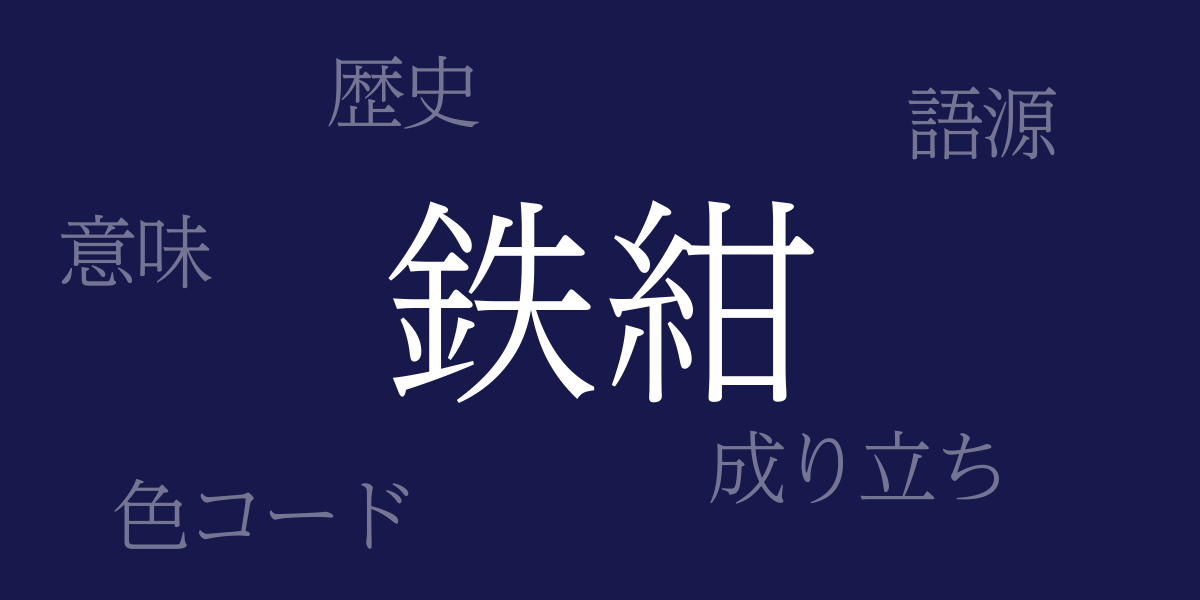The color that transcends time and continues to be loved, the traditional Japanese color ‘鉄紺’ (てつこん, Tetsukon). This deep, serene shade symbolizes Japanese aesthetic consciousness and is widely incorporated into modern fashion and design. This article delves into the allure of Tetsukon, exploring its historical and cultural background and its color codes for digital and print use.
About 鉄紺 (てつこん, Tetsukon)
鉄紺 (てつこん, Tetsukon), as its name implies, is a deep blue-black reminiscent of iron, commonly found in Japan’s nature and traditional crafts. Used in various cultural contexts like kimonos, pottery, and Japanese paintings, Tetsukon exudes calm yet possesses a strong presence, making it suitable for formal attire and high-status occasions, cherished by many.
History of 鉄紺 (てつこん, Tetsukon)
The use of Tetsukon dates back to the Heian period and was particularly esteemed in the warrior class society. By the Edo period, it had become a popular color among samurai and townspeople alike, with indigo dyeing techniques spreading its use. Post-Meiji era, Tetsukon solidified its status as a traditional Japanese color, maintaining its significance into the present day.
Color Codes for 鉄紺 (てつこん, Tetsukon)
When recreating Tetsukon in digital designs and web production, the following color codes are useful:
- HEX: #17184B
- RGB: R:23 G:24 B:75
- CMYK: C:99 M:100 Y:58 K:27
Western Names for 鉄紺 (てつこん, Tetsukon)
The Western equivalent of Tetsukon is sometimes called “Iron Blue” or “Navy Blue,” although these terms can refer to slightly different shades. Internationally, a similar color known as “Classic Blue” was highlighted as the Pantone Color of the Year 2020, drawing global attention.
Summary of 鉄紺 (てつこん, Tetsukon)
Tetsukon, as one of Japan’s representative traditional colors, continues to enchant many with its depth and serenity. Its shade is utilized across various design fields today, and accurate color codes are crucial for digital and print use. By revisiting Tetsukon, we reconnect with Japan’s rich aesthetic values, offering a fresh perspective on this historic hue.

























